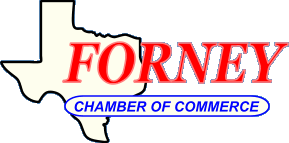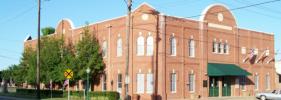History
Visit the Forney Historic Preservation League.
In 1847, Sallie Daugherty came from Arkansas with her four sons and purchased 1,000 acres of land four miles southeast of present-day Forney, naming the area Union Hill. This area later became known as Lone Elm. In 1848, Kaufman County was carved out of the huge Nacogdoches County. In the late 1840's, Jacob Sheltman settled on his homestead two miles southwest of our town and began farming and raising his family.
In the early 1850's, more settlers began to arrive in this area. The John G. Lewis family arrived from Mississippi in 1855 and carved a homestead out the prairie and timber land south on what was called the Sheltman Lake property. Lewis and his son, John M., both enlisted as privates in the Confederate Army in 1861, being the only two Forney area people to do so as can be determined. Many other veterans later moved here after the great war. By 1860, many hardy settlers entered booming Texas, mainly from the South. Hearing of the good land of the rolling prairies of this North Central Texas area, many stopped here and began their lives as farmers and ranchers. The small village that began to spring up near the rim of the bluff that overlooked the Bois D'Arc Fork of the Trinity River was to be named Brooklyn. Some say it was named for a small brook that ran in a wooded area near the present school Administration building on Bois D'Arc Street in south Forney. Possibly, it was named for the Brooks family that arrived here in the 1860's from their home in Brookville, Mississippi.
By the late 1860's, the Village of Brooklyn was established as the only town and trading center on this prairie land east of Dallas and west of Kaufman. Terrell was not founded as a town until 1873.
By the 1870's, John C. McKellar arrived from Marshall and opened Brooklyn's first merchandise store near the present day school district administration building. His father, John A. McKellar, had sent his son to Brooklyn to get a head start in business as he knew the new railroad line would likely come through this area. A saloon and other small businesses soon sprang up near the McKellar store and the layout of the town as we know it today began.
By 1873, Brooklyn was a growing town, with saloons, merchandise store, lodge, and was being supported by a few hundred people. It was the year that the Texas and Pacific Railroad come through Brooklyn, which was to change the face of our town forever.
As the town progressed, through the influence the Railroad provided, it was now ready for a Post Office to satisfy the residents' needs. The name of Brooklyn was submitted to the Post Office Department in Washington, D.C., however, another town by the same name with a Post Office was already established in Fayette County, so another name had to be selected for our town if it wished postal service. Changing of a town name was unusual, even in 1873. John Wein Forney, born in Lancaster, Pennsylvania, in 1817, was a director of the Texas and Pacific Railroad Company and was believed to have been instrumental in the new railroad route through the village of Brooklyn. In gratitude to Mr. Forney, several influential residents suggested Forney's name be submitted as a Post Office, and it was accepted. Thus the name of the town of Forney was established permanently.
The prairies that surrounded the town were covered with a native grass that was found to produce a sweet, nutritious hay when cut and baled. For the next 50 years "Forney Prairie Hay"' as it was known, was one of the leading export products of Forney.
- 5739 reads





